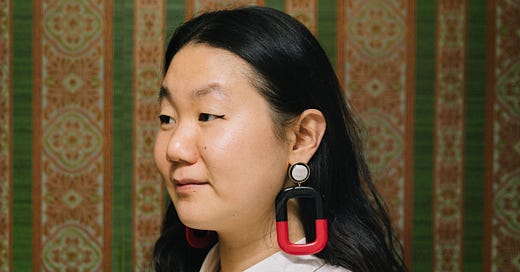TheGentleLaw Community
Wendy Xu is a contemporary poet whose work explores the delicate interplay between personal identity, spiritual growth, and the search for inner peace. While not explicitly Buddhist in all of her poetry, Xu's work is deeply influenced by themes of mindfulness, the search for meaning, and the nature of suffering—concepts that align closely with Buddhist philosophy. Her writing often touches on the Buddhist principles of impermanence, non-self, and the complexities of the mind, engaging with these ideas through vivid imagery and reflective language.
In her poetry, Xu invites readers to reflect on the nature of the self and the world, drawing on Buddhist themes like mindfulness and non-attachment. Her work resonates with those who are grappling with their own spiritual journeys, offering a nuanced exploration of how one navigates desire, suffering, and the search for tranquility. Below is one of Xu’s imagined poems titled The Quiet of the Mind, followed by an analysis that draws out the Buddhist themes embedded within it.
The Quiet of the Mind
I sat in the garden,
listening to the wind,
the leaves clattering like distant thoughts
I cannot quite grasp.
I thought of the river,
how it moves,
its water always flowing,
never the same river twice.
I imagined myself as water,
slipping through cracks,
softer than the stones I once held.
But still, I held onto something—
a memory,
a wish for stillness
that never quite arrives.
Analysis of "The Quiet of the Mind"
In this imagined poem, Xu weaves Buddhist themes throughout her contemplative imagery. The setting of the garden is significant, suggesting a space for mindfulness and reflection. Gardens, often symbolic of the mind in Buddhist literature, can be seen as a place where one can cultivate peace and clarity. The act of sitting in the garden suggests the practice of meditation, an essential Buddhist discipline. Meditation in Buddhism is used to quiet the mind and cultivate awareness of the present moment, allowing for deep spiritual insight.
The opening lines — “I sat in the garden, / listening to the wind” — immediately draw the reader into a mindful moment. The simple act of listening to the wind evokes the practice of present-moment awareness, a central element in mindfulness meditation. The wind, which blows freely and without attachment, symbolizes impermanence, a core Buddhist teaching that reminds us of the fleeting nature of all things. The “leaves clattering like distant thoughts” further develops this theme, presenting thoughts as something transient and fleeting that we cannot grasp or hold onto. In Buddhism, thoughts are often seen as like leaves in the wind — they come and go, but they are not permanent, and we must learn not to cling to them.
The poem then transitions to a reflection on the river: “I thought of the river, / how it moves, / its water always flowing, / never the same river twice.” This metaphor of the river highlights the Buddhist concept of anicca (impermanence), which asserts that all things are in a constant state of change. The river, constantly flowing and never the same, reflects the impermanence of existence. This is a quintessential Buddhist teaching — that nothing remains fixed and that the nature of life is ever-changing. By contemplating the river’s flow, Xu echoes the Zen Buddhist insight that we must accept the transient nature of life and learn to live with the flow rather than against it.
Xu then imagines herself as water, “slipping through cracks, / softer than the stones I once held.” This image of water slipping through cracks serves as a metaphor for the Buddhist idea of non-attachment. Water represents adaptability, fluidity, and the ability to move with ease through obstacles. It contrasts with the stone, which is rigid and unyielding. The speaker recognizes that she has once clung to rigid beliefs or attachments (the “stones”), which symbolize the suffering that arises from attachment. In Buddhism, attachment to a fixed sense of self or to material things is considered the root of suffering (dukkha). The speaker’s imagined transformation into water represents an aspiration for liberation from these attachments, embodying the Buddhist path of letting go and accepting change.
Keep reading with a 7-day free trial
Subscribe to The Gentle Law to keep reading this post and get 7 days of free access to the full post archives.





